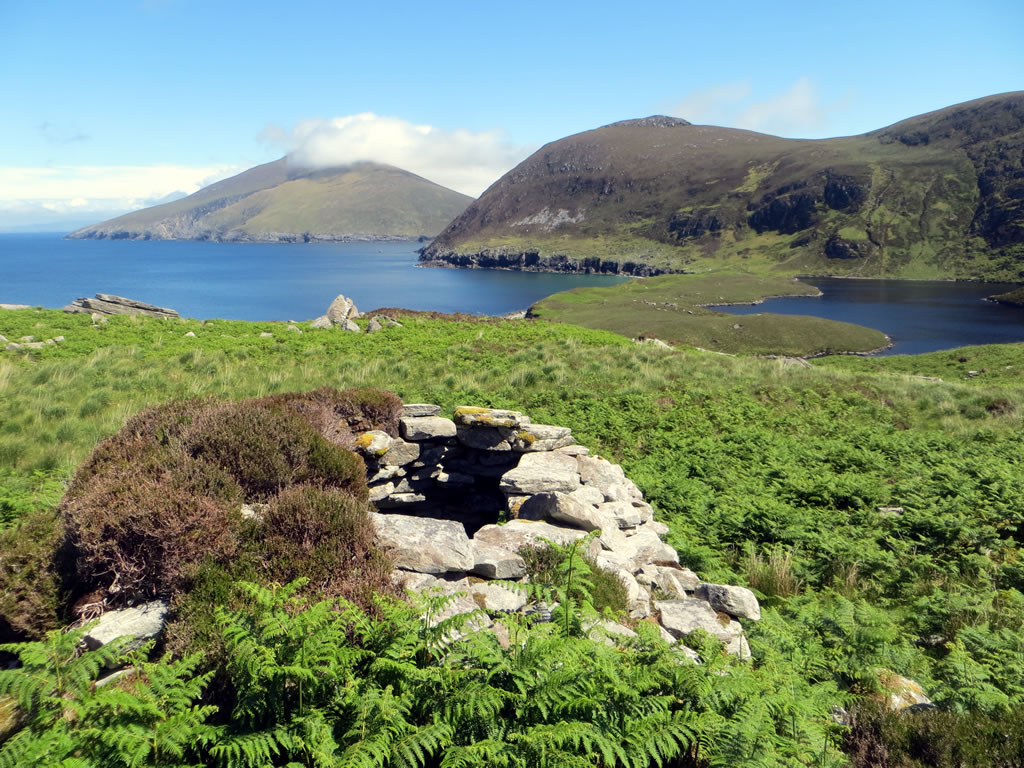This article is © Copyright Achill Archaeological Field School

Annagh is a remote and difficult to access area on the north side off Achill Island, Co Mayo, rightly famed for its great beauty. To the south is a curving range of cliffs that drop down to a wide plateau located 16m above sea level on which is located a large glacial lake, Lough Nakeeroge East. Beyond this is a low cliff that drops down to the stony shore and a sandy beech at the eastern side. A small settlement is located on a low rise to the west of the lake and beyond this there is a large flat area of pasture extending around to Saddle Head (Figure 1). The area has fine views across Blacksod Bay towards the southern tip of the Bellmullet Peninsula and the Inishkeas to the west. The settlement consists of the remains of at least 12 buildings of different shapes and sizes and in various states of preservation. To the immediate east of the settlement there is a large rectangular enclosure that contains a series of lazy beds. The settlement is identified locally as both a ‘Booley’ where transhumant farmers spent the summer months and where at a later date lobster fishermen from Inish Keye island would camp. At the east of the lake there is another building relating to the fishing industry, known as the Scotch House, erected in the mid to late 19th as part of a salmon fishery. Besides this well built rectangular structure are the possible remains of a Portal Dolmen that was apparently robbed out to provide building material for the Scotch House (McDonald 1997, 272).
During 2010 the settlement to the west of the lake was the subject of an intensive investigation by Achill Field School. All of the surviving buildings were surveyed in detail and a small exploratory excavation was conducted. The aim of the project was to record the settlement to a high standard and obtain artefactual dating evidence. A key consideration was the uncertainty in local accounts about which of the structures may have been built or modified by the Inish Keye lobster men, and special attention was paid in order to separate out phases of occupation to see if the impact of this secondary occupation could be identified.